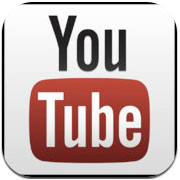
YouTube on Friday announced that it would begin supporting Ultra High Definition 4K video content. YouTube officially unveiled the news via TestTube, an incubator for new features concocted by its so-called mad scientists.
YouTube developers have posted six experimental videos that can be streamed at up to 2160p — essentially a resolution of 3,840 x 2,160. The videos support 60 frames per second, and thus are sharper and smoother than the common frame rates of 24fps and 30fps.
Serious Hardware
To appreciate the video content in all its glory, viewers need to have some serious computer hardware — including a monitor at that can support the 4K resolution. However, the six videos still can be viewed using less-impressive equipment, albeit at a lower resolution and frame rate.
“It’s definitely mainly for hobbyists at the moment,” said Joel Espelien, senior analyst at The Diffusion Group.
It will be necessary to clear other hurdles to watch the videos on a TV.
That will require “an updated YouTube app running natively on a 4K smart TV,” Espelien told TechNewsWorld.
“None of the standalone boxes support 4K yet,” he noted, “but keep your eyes on the new Apple TV later in the year. If that supports 4K, it will be a game changer for 4K video apps from a variety of folks.”
Ahead of the Game
4K has been touted as the next step in video evolution. However, given that the transition from analog to digital TV, which included the HDTV rollout, was completed only five years ago, it is unlikely that broadcast and cable networks are eager to do it again with an upgrade to 4K.
Yet online streaming services and even satellite pay-TV services now are actively exploring 4K delivery.
“4K is not an immediate requirement for any video service per se,” said Greg Ireland, research director of multiscreen video at IDC.
“YouTube can go on without it; Netflix too,” he told TechNewsWorld.
“However, 4K is another facet of the overall consumer experience — or potential consumer experience — and services that seek to stay established as market leaders will want to be at the forefront across these facets — 4K included,” Ireland added.
4K Adoption
TV makers are pushing the sets, which has created a chicken-and-egg scenario in which adoption of a new product is tied to content, and content is limited due to insufficient product adoption. However, some content providers could see an opportunity to get in on the ground floor of something potentially big.
“With prices on 4K TVs continuing to come down and visibility increasing at retail and in mass media, earlier movers on 4K have an opportunity to gain a competitive edge and attract eyeballs as adoption ramps up,” explained Ireland.
“We saw this in the early days of HD as certain pay TV providers, such as DirecTV, had a period of meaningful differentiation vis a vis the cable competition,” he recalled.
“For Web-based services, there are fewer barriers than with managed traditional pay-TV services, which need to provision the bandwidth requirement to offer 4K channels or on-demand content,” Ireland pointed out.
Offering 4K also could help YouTube stand out and gain traction at a time when it needs it most.
“YouTube has struggled with its premium content business, and while most of their content doesn’t require 4K, shooting music videos in 4K could be cool — and low-hanging fruit that would work well for them with their Vevo partnership,” said Espelien.
“For YouTube specifically, other factors may be in play,” he added, “ranging from proving the platform is ready to support the hosting of 4K content and continuing development of Google’s codec technologies.”





















































